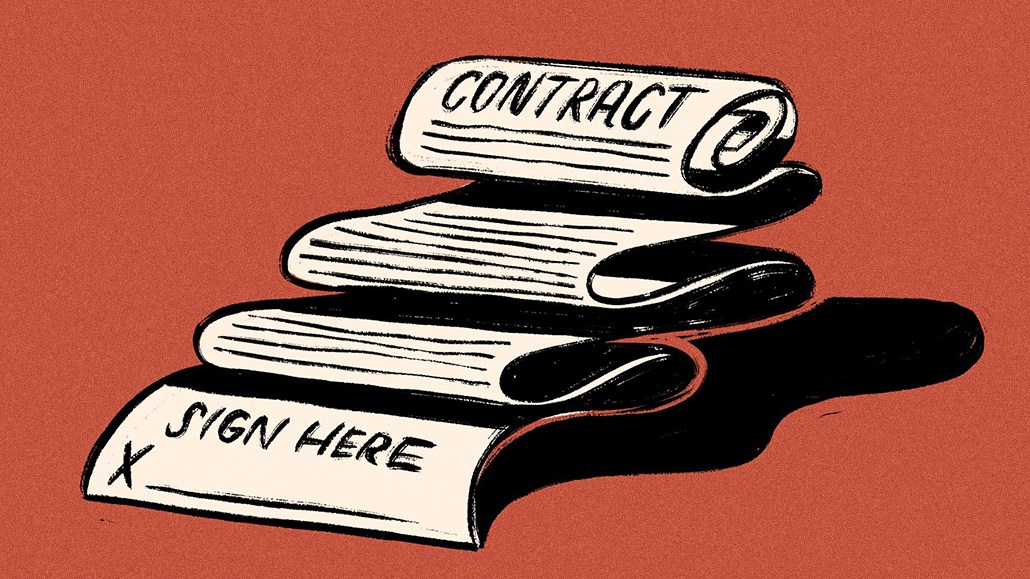Another sign the creator economy is growing up: brands hiring agencies of record

Sign number 108 that creators aren’t just a tactic for marketers anymore: they’re hiring agencies of record to manage them.
It might not be as headline-grabbing as Unilever’s influencer pledge or Publicis buying up Captiv8, but it signals the same shift: marketers are, for the umpteenth time, done dabbling. The era of patchwork partnerships and borrowed budgets is giving way to strategy, accountability and the infrastructure to match. Naming an agency of record is the industry’s shorthand for saying this ins’t going away.
“We’ve shifted from brands wanting to go on a date to wanting to be in a marriage,” said Emma Harman, co-CEO of Whalar.
Virgin Atlantic did just that earlier this month, tapping Whalar as its creator agency of record. Haleon brought on Collectively last year for a three-year run. What used to be an exception — a few brands making long-term bets — has started to look more like standard practice.
As Steven Lammertink, founder and CEO of The Cirqle, explained: “Yes, we are seeing a huge uptick in RFPs for creator agencies of record roles from brands — about 10 times.”
Sometimes these briefs are direct: the ask is for an “agency of record” full stop. Other times, the title is missing — but the mandate is clear: run the brand’s creator marketing. Own it across teams, regions and product lines. Money has a way of formalizing what was once messy.
“From an organic growth perspective [for the business] those brands are doubling and tripling their investment within the influencer space and turning from a one campaign to an annual evergreen strategy for net new business,” said Monika Ratner, head of growth at Horizon Media’s creator division Blue Hour Studios.
That’s a sharp contrast to just a year ago, when most briefs were still built around one-offs and smaller budgets. Now, both heritage brands and newer entrants are locking in long-term creator partnerships across categories.
“I would say in the past, as a percentage [of RFPs], the agencies of records were fewer and farther between — I could estimate it was certainly probably 25% or less,” said Holly Bent, svp, head of development at Billion Dollar Boy. “Whereas now, I would say the bulk, the majority of the RFPs and the requests that we’re getting are for agency of records and it’s much more rare that we’re getting a campaign based request.”
And what’s being asked in those briefs show just how far creator marketing has evolved. It’s no longer just sponsored stories and product placement deals. It’s episodic content on YouTube developed with creators at the table. It’s bringing creator thinking upstream into brand platforms. The platforms still matter, of course — but they’re just one part of a broader, more integrated approach. The playbook has grown up.
So have the budgets. Brands are now spending between $1.5 million and $2 million on these creator agencies of record deals, according to execs interviewed for this article. It’s the type of investment that comes with expectations — and infrastructure to match.
“I think the creator AOR is no longer like a nice to have add-on for these larger portfolio businesses and larger CPG brands,” said Bent. “It’s really a fundamental requirement for building genuine connections driving measurable impact.”
Cynics might call this industry hype. But recent claims suggest otherwise. Zola’s CMO Birana Severson recently said she;s doubling down on creators to offset potential search traffic declines. L’Oreal’s global media director Karla Velez noted at MAD/Fest in London that creator content works best with upper-funnel brand building. And Publicis Groupe CEO Arthur Sadoun recently pegged the U.S. creator economy as a $30 billion addressable ad market.
“With that bigger investment, then comes the C-suite,” said Harman. “And with the C-suite comes a much more strategic conversation, and it has to be scaled, because most big brands need scale.”
When spending scales, the model does too. In some cases, creator agencies of records are replacing traditional social agencies. In others, they’re working in lockstep with creative and media shops — wedging themselves deeper into the core marketing stack.
“They’re [creator agencies of record] working in tandem for the most part,” said Natalie Silverstein, chief innovation officer at Collectively. “And it depends on the opportunity, but sometimes the original creative ideas are generated by a creator agency, not the creative agency. And sometimes it’s a collaboration. It really just depends.”
Like mobile, social, and programmatic, the path to legitimacy for creators has followed a predictable arc: first came skepticism, then testing, then a wave of brands deciding they’d figure it out in-house. Eventually, the conclusion settled in: this is bigger than a trend and not something to wing. So now, the industry is doing what it always does — bringing in the infrastructure to manage the thing that used to feel unmanageable.
“This is what the C-suite is asking for now,” said Ratner. “Before we’d be working with social teams. Now, it’s coming from the top down. They’re telling us they need a serious and robust influencer presence that not only helps the brand break through, but it also drives performance.”
More in Marketing

The definitive Digiday guide to what’s in and out for advertising in 2026
Here’s the definitive guide to what’s in and out in 2026.

‘Less pitching, more listening’: What Amazon is really doing at CES
Amazon’s ad execs come to CES for their annual reality check.

After watching X’s ownership issues play out, marketers brace for TikTok whiplash in 2026
TikTok’s ownership drama has echoes of X (formerly Twitter), but ad performance has kept marketers for fleeing—for now.







